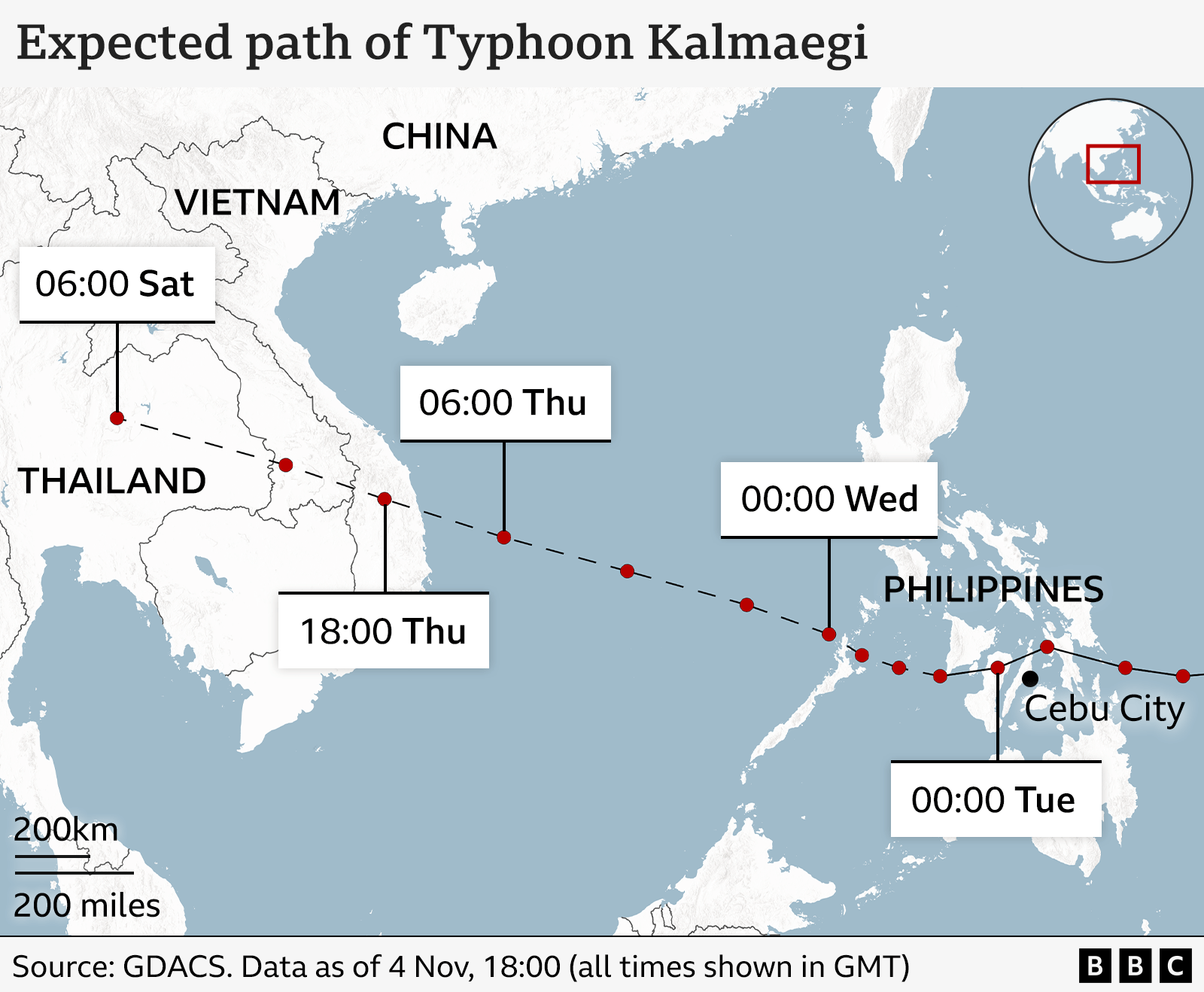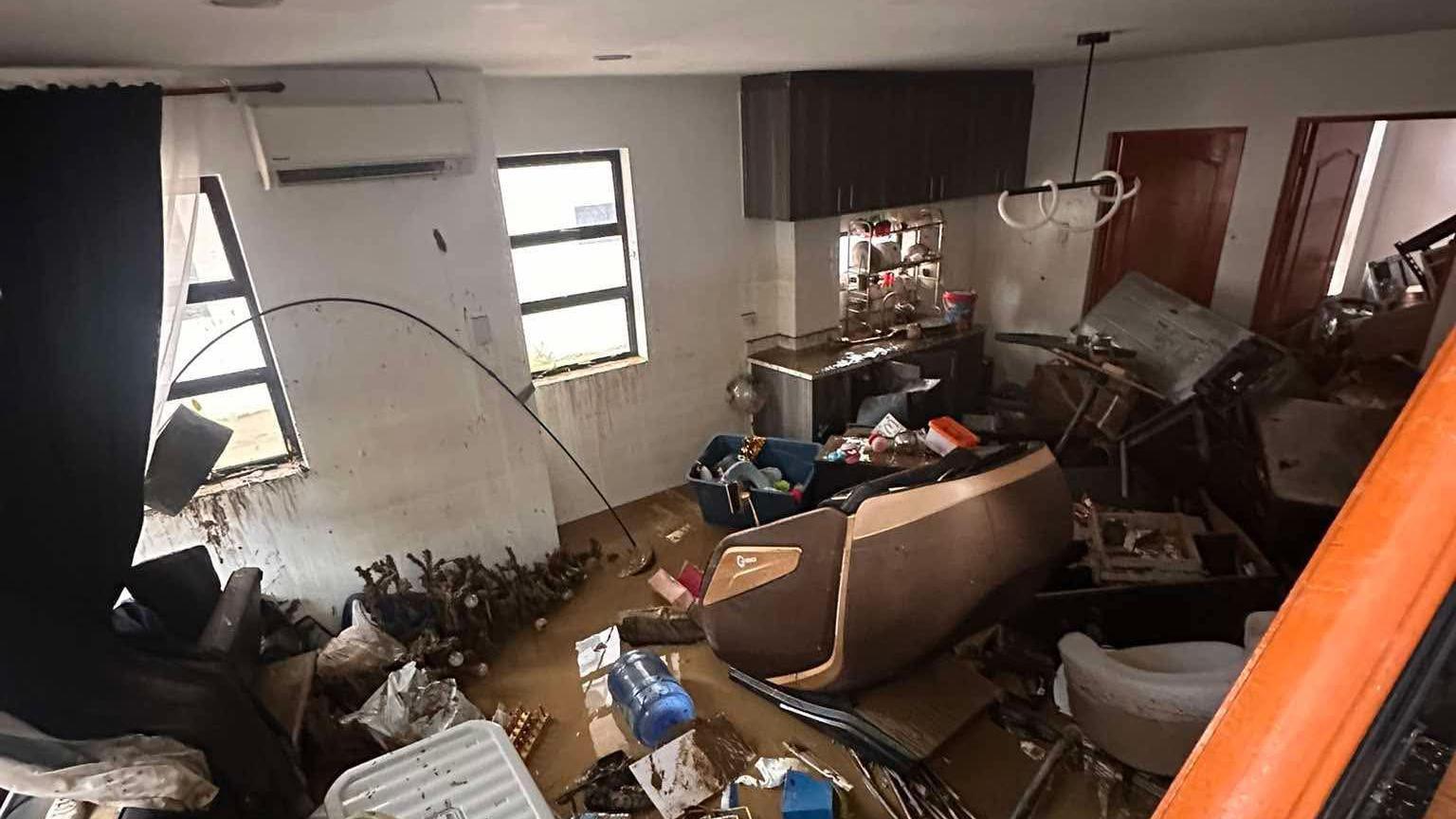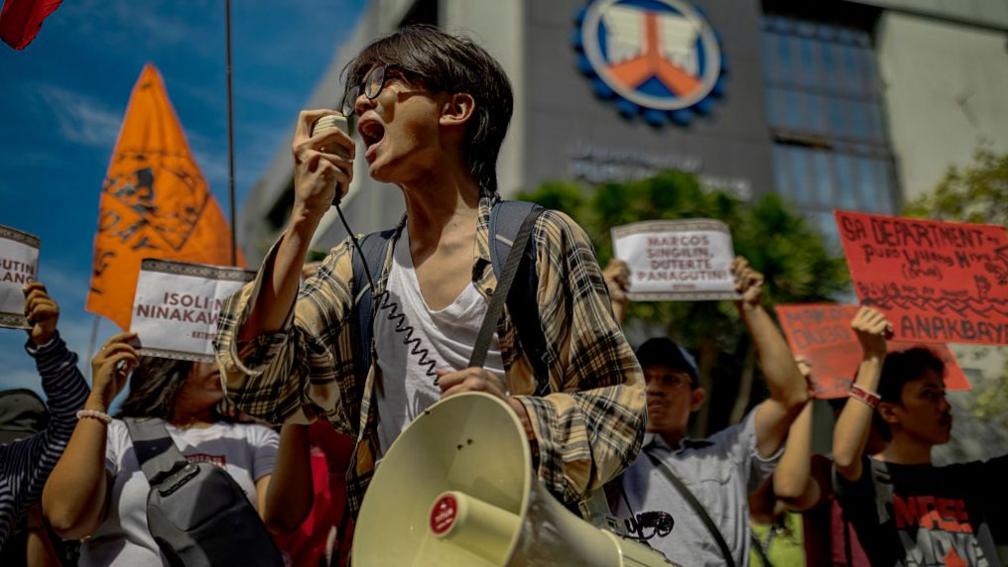More than 85 dead as typhoon wreaks havoc in the Philippines
Watch: Filipino families assess damage after Typhoon Kalmaegi
- Published
At least 85 people have been killed while hundreds of thousands fled their homes as one of strongest typhoons this year ripped through the central Philippines, authorities say.
Typhoon Kalmaegi has flooded entire towns on the most populated central island of Cebu, where at least 49 of the fatalities were located. There are 75 others missing and 17 injured, officials said on Wednesday.
Videos show people sheltering on rooftops, while cars and shipping containers have been swept through the streets.
The official death toll, which is likely to rise, includes six crew members of a military helicopter that crashed on Mindanao island, south of Cebu, after it was deployed to assist in relief efforts.

The aircraft went down on Tuesday near Agusan del Sur and was one of four sent to help.
"Communication with the helicopter was lost, which immediately prompted the launch of a search and rescue operation," the Philippine Air Force said. Later, a spokeswoman said six bodies had been recovered, believed to be of the pilot and crew.
The typhoon, locally named Tino, has weakened since making landfall early on Tuesday, but has continued to bring winds of more than 80mph (130km/h).
It is forecast to move across the Visayas islands region and out over the South China Sea by Wednesday.
But residents across Cebu province are still reeling from the deadly floods. More than 400,000 people have been displaced by the disaster, according to a report on Wednesday by the national disaster agency.
Jel-an Moira Servas, a business owner who lives in Mandaue city, told the BBC that she found herself waist-deep in water within minutes when her house became flooded. She quickly evacuated with her family, bringing only light items like food and electronics.
"Right now, the rain has completely stopped and the sun is out, but our houses are still filled with mud, and everything inside is in shambles," she said. "We don't even know where to start cleaning. I can't even look at it without crying."

Jel-an Moira Servas's home in Mandaue city was damaged by heavy flooding during the typhoon
Rafaelito Alejandro, the deputy administrator at the Office of Civil Defence told local radio station DZMM that the current challenge for rescuers was clearing "debris and cars on the road".
Carlos Jose Lañas, a volunteer rescuer, told the BBC that despite preparing for the worst case, they were caught off-guard by the extent of the flooding.
"This is the worst flood I've ever experienced," the 19-year-old said. "Almost all the rivers here in Cebu overflowed. Even emergency responders did not expect this kind of scenario."
"The rescue operation was too overwhelming for the emergency responders around Cebu, because there were a lot of people asking for help."
In a Facebook post, Cebu governor Pamela Baricuatro described the disaster as "unprecedented".
"We were expecting the winds to be the dangerous part, but... the water is what's truly putting our people at risk," she said. "The floodwaters are just devastating."
Baricuatro declared a state of calamity in Cebu on Tuesday evening to facilitate disaster relief efforts.
Most of the deaths were due to drowning, reports said. The storm has been sending torrents of muddy water down hillsides and into towns and cities.
Damage to residential areas on Cebu was extensive, with many small buildings swept away and a thick carpet of mud left by the retreating floodwaters. Rescue teams took to boats to free people who were trapped inside their houses.
Don del Rosario, 28, was among those in Cebu City who sought refuge on an upper floor as the storm raged.
"I've been here for 28 years, and this is by far the worst we've experienced," he told the AFP news agency.
Moment Philippines floods move shipping containers
The Philippines is hit by an average of 20 storms and typhoons each year.
The latest comes barely a month after back-to-back typhoons killed over a dozen people and wrought damage to infrastructure and crops.
Super Typhoon Ragasa, known locally as Nando, struck in late September, followed swiftly by Typhoon Bualoi, known locally as Opong.
In the months before, an extraordinarily wet monsoon season caused widespread flooding, sparking anger and protests over unfinished and sub-standard flood control systems that have been blamed on corruption.
On 30 September, dozens were killed and injured after a powerful 6.9 magnitude earthquake struck the central Philippines, with Cebu bearing the brunt of the damage.
Typhoon Kalmaegi is forecast to move on to Vietnam, which is already seeing record-breaking rainfall.
With additional reporting by Jonathan Head, South East Asia correspondent
Related topics
- Published17 September
